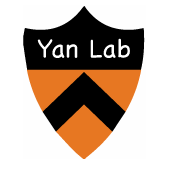Structural, biochemical, and functional analyses of CED-9 recognition by the proapoptotic proteins EGL-1 and CED-4
Type
Programmed cell death in Caenorhabditis elegans is initiated by the binding of EGL-1 to CED-9, which disrupts the CED-4/CED-9 complex and allows CED-4 to activate the cell-killing caspase CED-3. Here we demonstrate that the C-terminal half of EGL-1 is necessary and sufficient for binding to CED-9 and for killing cells. Structure of the EGL-1/CED-9 complex revealed that EGL-1 adopts an extended alpha-helical conformation and induces substantial structural rearrangements in CED-9 upon binding. EGL-1 interface mutants failed to bind to CED-9 or to release CED-4 from the CED-4/CED-9 complex, and were unable to induce cell death in vivo. A surface patch on CED-9, different from that required for binding to EGL-1, was identified to be responsible for binding to CED-4. These data suggest a working mechanism for the release of CED-4 from the CED-4/CED-9 complex upon EGL-1 binding and provide a mechanistic framework for understanding apoptosis activation in C. elegans.

